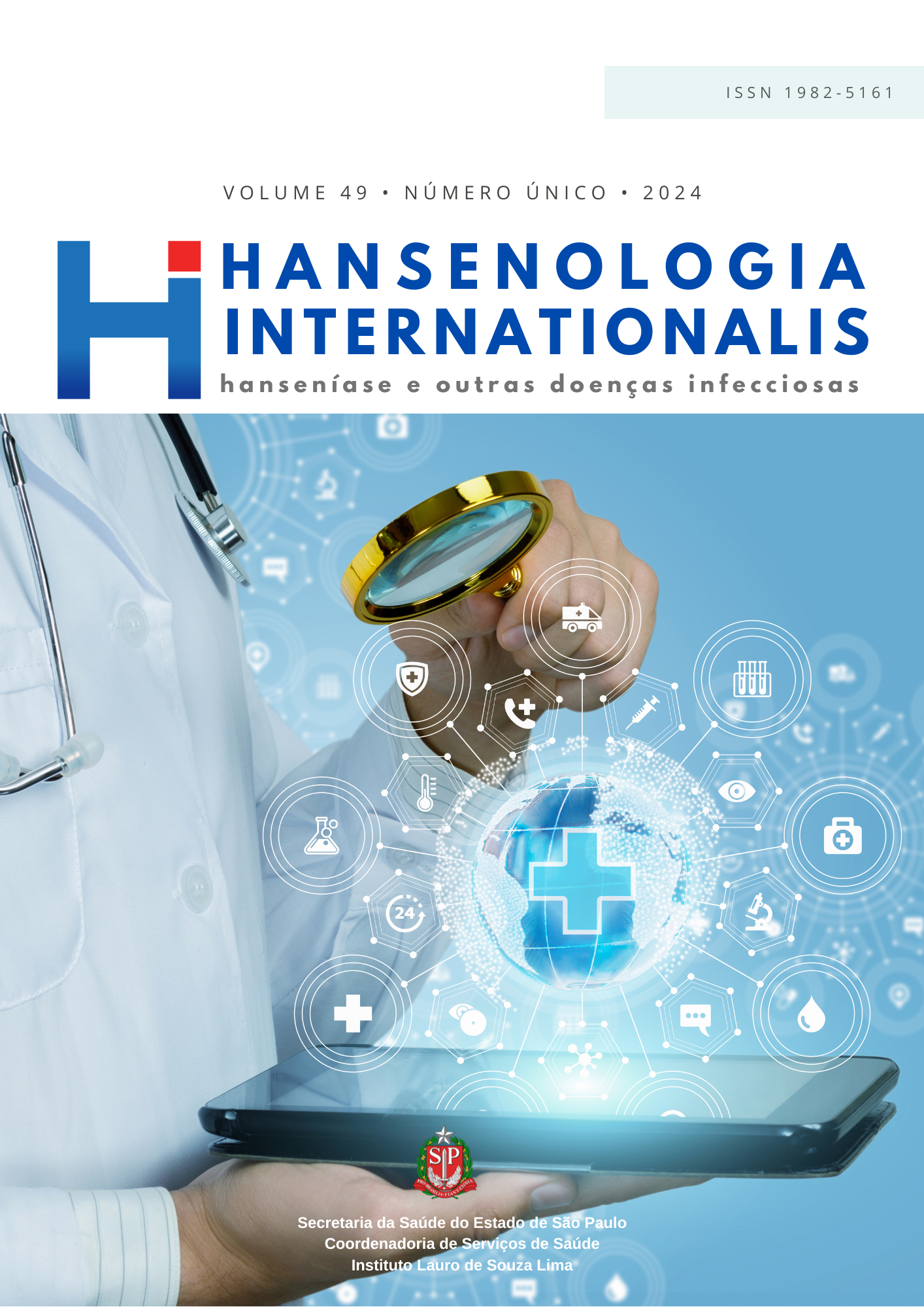Abstract
Introduction: leprosy is a chronic infectious disease caused by Mycobacterium leprae, characterized by a wide spectrum of clinical presentations. In India, borderline-tuberculoid leprosy is the most common form encountered in clinical practice. Type 1 lepra reaction in borderline- uberculoid leprosy usually presents as the development of erythema and/or edema in pre-existing skin lesions. Ulceration of skin lesions in type 1 lepra reaction is uncommon and occurs in severe reactions. Objective: to report an unusual presentation of borderline-tuberculoid leprosy with ulcerative type 1 lepra reaction in an immunocompetent patient. Case description: we present the case of a 65-yearold man with chief complaints of ulcerated plaque over his left thigh. He also had other skin lesions suggestive of borderline-tuberculoid leprosy over his trunk and limbs, as well asenlarged, mildly tender left ulnar and lateral popliteal nerves. A slit skin smear was negative, while a skin biopsy supported the diagnosis of borderline-tuberculoid leprosy. The patient responded to multibacillary multidrug therapy according recommended by World Health Organization and tapering doses of prednisolone, with complete healing of the ulceration at six weeks follow-up. Discussion: type 1 lepra reaction associated with borderline-tuberculoid leprosy usually presents with increased erythema and edema in pre-existing skin lesions. Ulceration in such skin lesions is not commonly seen except in cases with severe type 1 leprosy reactions. Administration of oral corticosteroids along with multibacillary multidrug therapy is the key to managing ulcerative type 1 lepra reaction. The ulceration heals rapidly with tapering doses of oral corticosteroids, limiting the duration of morbidity. Final consideration: the case emphasizes the need for dermatologists and leprologists to be aware of atypical presentations of leprosy reactions, ensuring timely diagnosis and effective management to achieve optimal patient outcomes.
References
1. Sunandini PA, Prasad PG, Chalam KV, Padmasiri Y. Type 1 lepra reaction with ulceration (Lazarine leprosy): two interesting case reports. IOSR J Dent Med Sci. 2015 [cited 2023 Jul 12];14(1):22-5. Available from: https://www.iosrjournals.org/iosr-jdms/papers/Vol14-issue1/Version-4/F014142225.pdf.
2. Hegde P, Jaiswal D, Shetty VM, Pai K, Rao R. Cutaneous ulceration as a presenting feature of type 1 lepra reaction: a case report. Trop Doct. 2022;52(2):354-6. doi: https://doi.org/10.1177/00494755211068661.
3. Jopling WH, McDougall AC. Handbook of leprosy. 5th ed. New Delhi: CBS Publishers; 1996. p. 1-7.
4. Mushtaq S, Dogra N, Dogra D, Faizi N. Trends and patterns of leprosy over a decade in a tertiary care hospital in Northern India: a retrospective analysis. Indian J Dermatol Venereol Leprol. 2020;86(2):141-9.
5. Kumar B, Dogra S. Case definition and clinical types of leprosy. In: Kumar B, Kar HK. IAL Textbook of Leprosy. 2nd ed. New Delhi: Jaypee; 2017. p. 238-50.
6. Wankhade V, Shah V, Singh RP, Bhat D. Lazarine leprosy: a unique phenomenon of leprosy. Int J Mycobacteriol. 2020;9(3):329-31. doi: https://doi.org/10.4103/ijmy.ijmy_104_20.
7. Bhat R, Pinto M, Dandakeri S, Kambil S. Ulcerating type 1 lepra reaction mimicking Lazarine leprosy: an unusual presentation of immune reconstitution inflammatory syndrome in an HIV-infected patient. Int J STD AIDS. 2013;24(12):992-4. doi: https://doi.org/10.1177/0956462413490144.
8. Mouchard A, Blaizot R, Graille J, Couppie P, Bertin C. Leprosy as immune reconstitution inflammatory syndrome in patients living with HIV: description of French Guiana’s cases over 20 years and systematic review of the literature. PLoS Negl Trop Dis. 2022;16(3):e0010239. doi: https://doi.org/10.1371/journal.pntd.0010239.
9. Mushtaq S. Ulcerated cutaneous lesions in type 1 lepra reaction healing with morpheaform scarring: an unusual presentation. Int J Dermatol. 2023;62(6):e350-1. doi: https://doi.org/10.1111/ijd.16586.

This work is licensed under a Creative Commons Attribution 4.0 International License.
Copyright (c) 2024 Sabha Mushtaq
